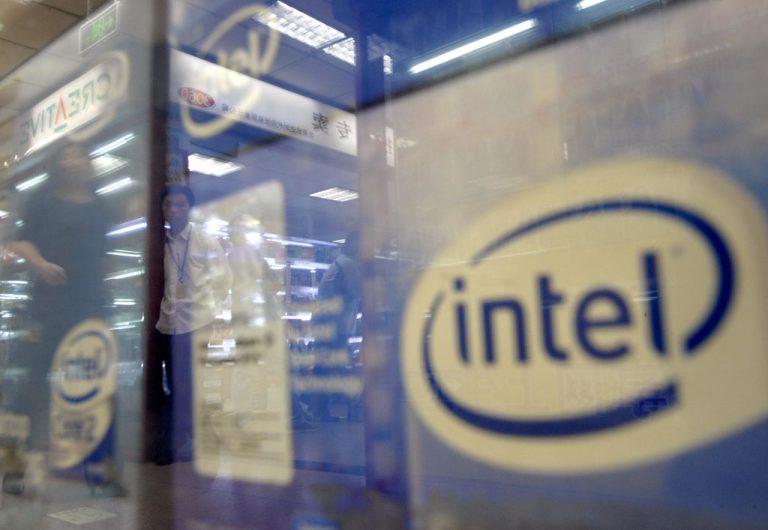One of the world’s industry leaders in CPU production, Intel, announced it will launch a new facility inside the borders of Mainland China at a time that many of its peers, and even other countries, are rushing to “de-risk” from China.
Intel used its WeChat account to announce the launch of the Intel Greater Bay Area Innovation Centre, which, despite the name, is not located in California, but instead in Shenzhen, South China Morning Post reported on July 31.
The facility is said to be a collaboration with the Nanshan branch of the Chinese government, which is still the Chinese Communist Party, and “will focus on artificial intelligence (AI), chip applications and edge computing, among other technologies,” according to a summary of the announcement by SCMP.
Intel’s statement also said that the Nanshan government wants to become an “innovation highland” by way of “a combination of industrial policy, Intel’s product and technology ecosystem, and innovation from local partners.”
Wang Rui, Chairman of Intel China, was quoted as stating at an unveiling event for the facility, “We will further leverage Intel’s technology and ecosystem strengths … facilitate the integration and development of emerging sectors in the Greater Bay Area and across the country … and help develop the digital economy.”
Success
You are now signed up for our newsletter
Success
Check your email to complete sign up
Mainland companies are set to benefit from the Innovation Centre, with six “local tech firms” having inked contracts with Intel during the launch.
“The companies will set up multiple joint labs to research areas including low-carbon and energy-saving IT solutions, PC and server chips, and smart transport,” SCMP said.
Intel also “pledged technical and resource support” for Nanshan-area companies, “helping with market roll-outs and industry access.”
The firm may be seeing a business opportunity in China after the Biden administration used its connections in U.S. network media to foreshadow an outright ban on NVIDIA’s A100 and H100 processors, widely used in cutting edge artificial intelligence deep learning and machine learning, at the end of June.
Intel recently released a processor called Gaudi2, which does not yet fall within the classifications triggering export controls as NVIDIA and rival AMD’s offerings do.
In late July, CEO Patrick Gelsinger visited the Mainland for the second time since April, SCMP wrote in a second article, where he met with executives of Chinese corporations who pledged to use the Gaudi2, in addition to visiting his company’s Chengdu packaging plant.
“The Intel head was received by Huang Qiang, the provincial governor of Sichuan and Shi Xiaolin, the Chengdu party secretary, according to local media,” SCMP noted.
Nonetheless, the coast is not yet clear for Intel being totally accepted by the Chinese government.
In February, Intel announced it intends to acquire Israeli semiconductor fabricator Tower Semiconductor for $5.4 billion.
A report by Tom’s Hardware at the time stated the acquisition would give Intel several 200 nm fabrication facilities in the United States, Israel, and Japan.
While the deal ostensibly has no connection to China, the problem for Intel is that China’s State Administration for Market Regulation (SAMR) must approve mergers and acquisitions when they involve companies who generate more than $55 million revenue inside China.
This point is significant because SCMP points out the company “generates more than a quarter of revenues from China.”
And holding back the transaction is exactly what the SAMR has thus far done, Seeking Alpha reported in a second January of 2023 article, stating that the agency had “suspended the clock” on the review.
In April reporting by The Wall Street Journal, the outlet said “Beijing is holding back its required green light for mergers that involve American companies as a technology war with Washington intensifies.”
Citing unidentified sources in the government, WSJ said that SAMR had effectively put a precondition on the approval process: “to make available in China products they sell in other countries—an attempt to counter the U.S.’s increased export controls targeting China.”
The advent of an Intel facility in China’s Greater Bay Area is a notable about-face for the company.
In December of 2020, shortly after Joe Biden became President-elect, Forbes reported that then-CEO Bob Swan had singled out the Greater Bay Area in a letter to Biden demanding “a national strategy to protect the semiconductor industry.”
“If one wants to be skeptical, Swan may be warning that the domestic multinationals are just going to make the stuff in China unless they get thrown a very meaty bone,” the article wrote during a very different post-Trump international climate that saw companies continue to offshore production to China in defiance of “America First.”
Swan, who left Intel in February of 2021, may have obtained his desires.
One of the Biden administration’s pet projects, the CHIPS Act, was passed in 2022 and amounts to a federal stimulus package to the semiconductor industry… with strings attached.
The biggest leash is that recipients of funds cannot build “advanced technology facilities” inside of China for 10 years.
Since the Intel Greater Bay Area Innovation Centre appears to be something of a networking facility inside the Mainland and not a production hub, it likely is outside the scope of the CHIPS Act restrictions.
















